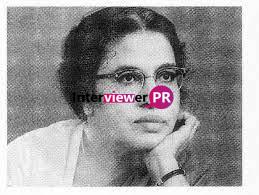Biography
Justice Anna Chandy (1905–1996), also known as Anna Chandi, was the first female judge (1937) and then High Court judge (1959) in India. She was, in fact, one of the first female judges in the British Empire next to Emily Murphy.
Early Life
Anna Chandy was born in 1905, in the erstwhile kingdom of Travancore and raised in Trivandrum. She was an Anglican Syrian Christian who embraced Catholicism, in later life. After obtaining a post-graduate degree in 1926, she then became the first woman in her state to get a law degree. She practised as a barrister from 1929 while simultaneously promoting the cause of women’s rights, most notably in Shrimati, a magazine that she both founded and edited.
Often described as a “first-generation feminist”, Chandy campaigned for election to the Shree Mulam Popular Assembly in 1931. She meet with hostility from both her competition and newspapers but got elect for the period 1932–34.
Chandy got appoint as a munsif in Travancore by Sir C.P. Ramaswami Iyer, the Dewan of Travancore, in 1937. This made her the first female judge in India and, in 1948, she got raise to the position of District Judge. She became the first female judge in an Indian high court.
- Advertisement -
When she was appointed to the Kerala High Court on 9 February 1959. She remained in that office until 5 April 1967. In her retirement, Chandy served on the Law Commission of India and also wrote an autobiography titled Atmakatha (1973). She died in 1996.
Became The Founder And Editor Of Magazine
Apart from her practice, Anna Chandy got determine to make a better place for women in society. In 1930, she became the founder and editor of a Malayali Magazine titled Shrimati, which served as a platform to voice women’s rights. In her periodicals, she would question discriminating norms handcuffed by misogyny that affected women’s lives, spoke for widow remarriage and their freedom. She emphasized how women faced enormous wage discrimination when they worked on farms. She was often touted as the ‘first-generation feminist’ for her endeavours.
In 1930, she ventured into politics by standing for the representative body of the Travancore state. However, several of her opponents and other publications demeaned her by publishing stories of her connections with the Dewan of the state. By 1931, when she contested for the same elections again, she had become a public figure but could still not secure the seat for herself. Nevertheless, she again contested in the succeeding year and secured herself a position for two years.
First Woman Judge of India in 1937
Sir C.P. Ramaswamy Iyer, the then Dewan of Travancore, appointed her as the first woman Judge of the country in 1937. Post-independence, she set another historical precedent by becoming the first woman Judge of Independent India when she was appointed in the Kerala High Court, where she served until 1967. Then, she proceeded to work with the Law Commission of India after her retirement. She published her autobiography in 1971 titled Aatmakatha. Anna Chandy died in 1996 but left a mark on the Indian Judiciary and raised hopes for women inclusion in professional spaces.


